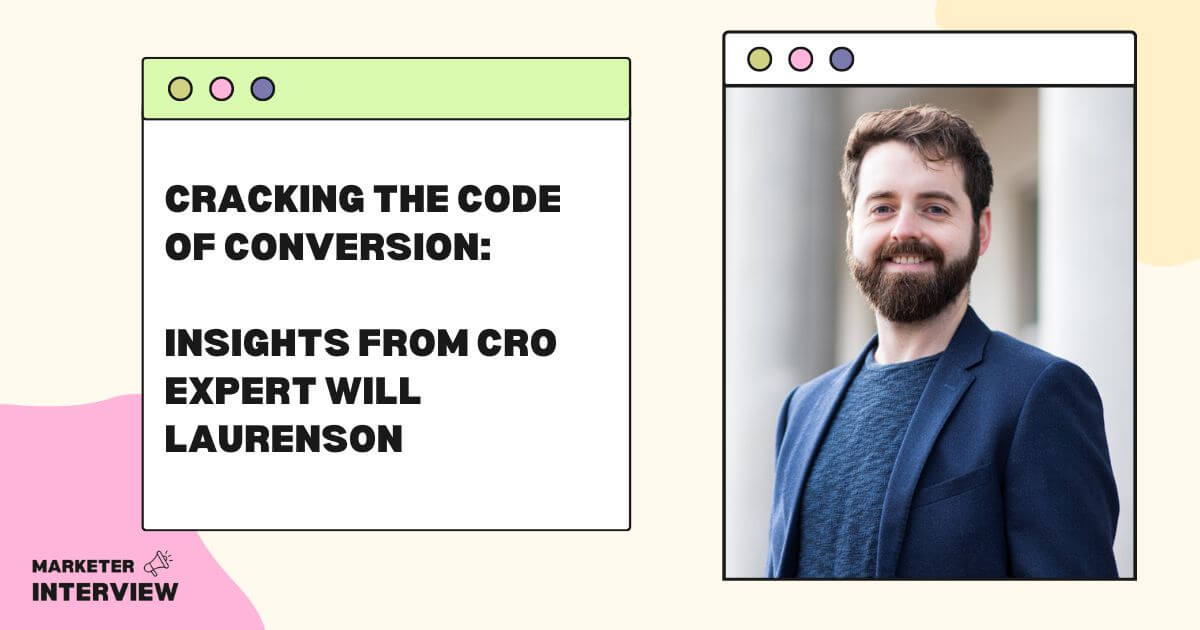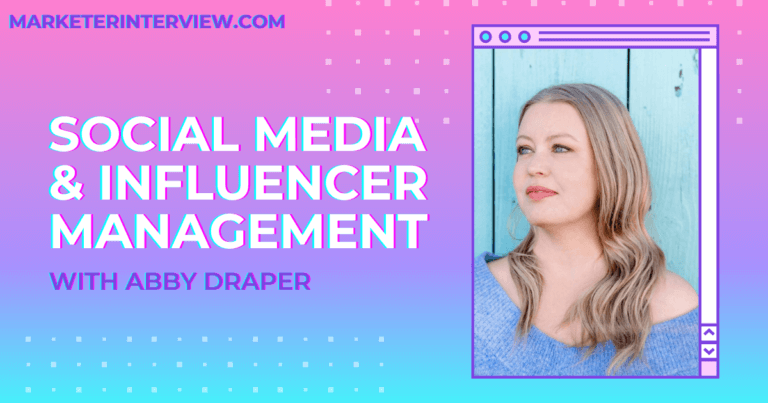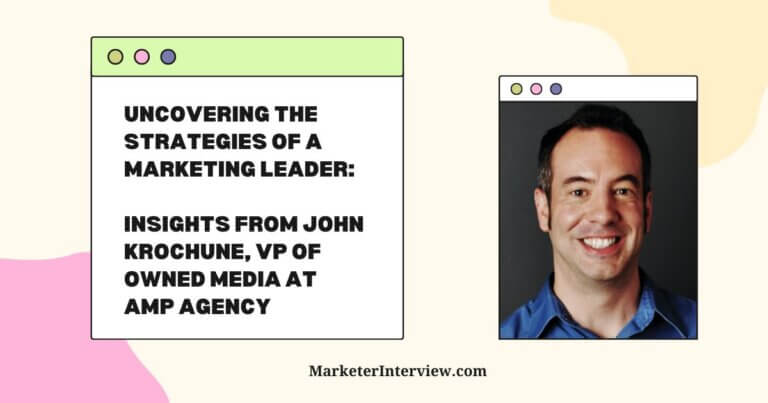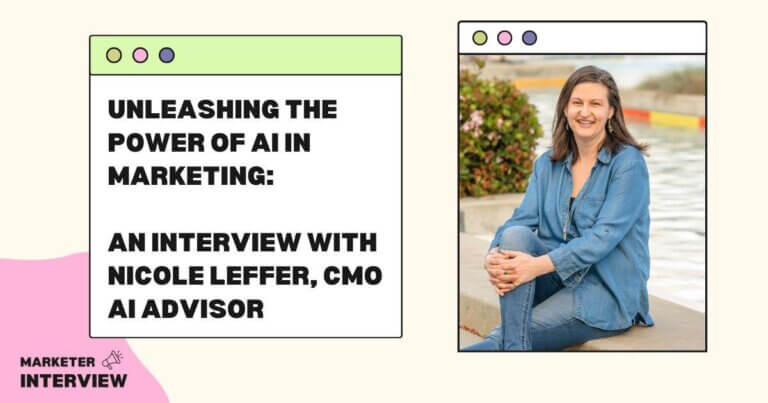Cracking the Code of Conversion: Insights from CRO Expert Will Laurenson
Welcome to Marketer Interview, the go-to blog for insights and inspiration from top marketing professionals.
In this edition, we have the privilege of interviewing Will Laurenson, the CEO of Customers Who Click, a leading CRO agency specializing in Conversion Rate Optimization.
Will has an impressive track record of helping 8-figure eCommerce brands improve conversion rates and maximize their marketing budgets.
With his expertise in targeting key consumer behaviors, Will has successfully transformed website traffic into substantial revenue.
Join us as we explore his journey, his career in marketing, and his insights into the world of Conversion Rate Optimization.
Contents
- 1 Can you share how you got into marketing and eventually specialized in Conversion Rate Optimization?
- 2 What inspired you to establish Customers Who Click and focus on Conversion Rate Optimization for eCommerce brands?
- 3 Could you explain the concept of Conversion Rate Optimization in simple terms for our readers who might not be familiar with it?
- 4 How do you identify the usability aspects of a website and determine its effectiveness in helping customers find and purchase what they need?
- 5 What strategies do you employ to enhance a website’s performance when addressing customer concerns and anxieties?
- 6 Motivation plays a crucial role in driving conversions. How do you create an exciting and compelling experience for visitors, encouraging them to take action?
- 7 Can you share a notable success story where your CRO strategies significantly improved a brand’s conversion rates and revenue?
- 8 What are some common challenges you face while implementing Conversion Rate Optimization for eCommerce brands, and how do you overcome them?
- 9 In your experience, what key tools and software are essential for a CRO specialist’s arsenal?
- 10 How do you stay updated with the latest trends and advancements in Conversion Rate Optimization? Any favorite resources or communities you rely on?
So my first role was a “Marketing & Account manager” role at a startup, which turned out to be a pure sales role. But I learned a lot from that role, and the experience doing sales early on was invaluable.
As a startup, I did get the opportunity to move across into marketing, especially in a company where apart from a little PPC, a lot of SEO, and an email list, there wasn’t a marketing culture in place. So my first proper foray into marketing was when a consultant was brought in, and I worked directly with him.
As for CRO, I fell into it. I was running marketing at a couple of different startups, and the same problem kept coming up – here’s £100k a month, acquire customers and grow the company.
But I’m sure you know it doesn’t work that way.
Our landing pages weren’t great. The product wasn’t doing its job either. So I started to spend more time doing customer research, on the phones, doing customer service, sending surveys, and trying to understand what drove our customers to buy and what we needed to do to make that happen more.
I then started working more closely with the product & development teams to ensure our websites and apps worked properly and gave customers what they needed.
What inspired you to establish Customers Who Click and focus on Conversion Rate Optimization for eCommerce brands?
There were 2 things that did it.
Firstly, after speaking to many people in the industry, it was evident they faced the same problems I had. Large marketing budgets and total responsibility for growing the company, but no responsibility for the website, messaging, design, etc. They were limited in their options and could drive traffic to a website and hope.
Secondly, I’d hired agencies in the past and been disappointed. We were sold to by the directors and then given a recent graduate with 18 months of experience to run our account.
I was adamant I didn’t want to provide that experience. I wanted to work directly with brands. So at Customers Who Click, everyone responsible for the strategy and growing our clients’ accounts has plenty of experience.
Could you explain the concept of Conversion Rate Optimization in simple terms for our readers who might not be familiar with it?
CRO is a growth discipline for a business. It’s not a marketing channel, and it’s not just A/B testing.
The responsibility of a CRO team is to experiment with the business and then use the insight gathered to help optimize every aspect of a business.
We’ll run various forms of research, then pass that insight to the paid acquisition team, customer service, product, etc.
We’ll run tests on the website and let the other teams know what the audience responds to, positively or negatively.
Finally, we can also test assumptions about other aspects of the business.
When one client wanted to build a B2B sales team, we ran a test on the website to prove whether that B2B interest was there instead of letting him just start hiring and give it a go.
CRO is a way of understanding your business needs to grow.
While a lot of what we do directly targets conversion rates or average order values, a good CRO team is always looking at the bigger picture: How can we help the marketing teams optimize their channels?
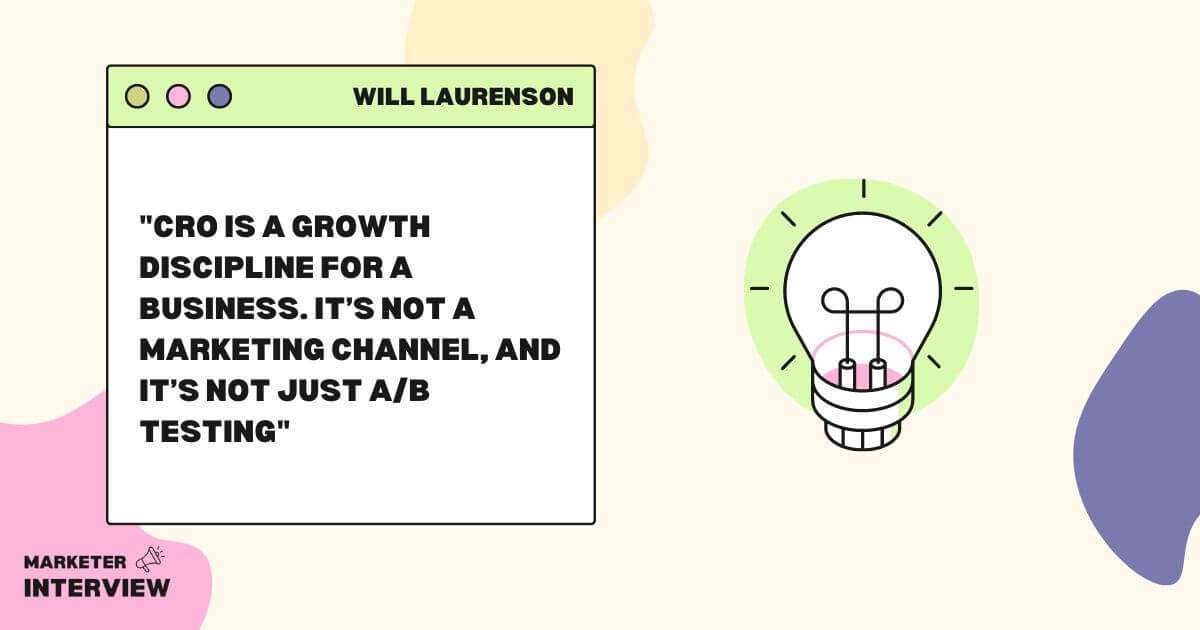
How do you identify the usability aspects of a website and determine its effectiveness in helping customers find and purchase what they need?
Usability comes down to 2 things:
1. Does the website work?
Does it work properly across different devices & browsers? Are there any apps conflicting with each other or blocking important parts of the website, such as CTAs?
2. Does the website help customers find and buy what they want?
This is important, especially as so many brands now direct traffic to a landing page or a specific product. This is great and is what brands should do, but it’s important to remember that the product they land on might be wrong for them.
Fortunately, most websites following standard practice shouldn’t have much of a usability issue, but things can always be done better.
- Is the website navigation clear and easy to use? Or are you using confusing category names?
- Do you have a rich search function?
- Are your filters & sorting options optimal?
- Do you provide common payment options?
A great way to determine effectiveness and interest in these functions is by tracking clicks in GTM.
If many people click certain buttons, then you know it’s important. If the conversion rate is low, you know you have a problem with what’s displayed.
What strategies do you employ to enhance a website’s performance when addressing customer concerns and anxieties?
Anxieties & concerns cover 2 key areas: Your product and your business.
To buy something, a customer has to be confident it meets all their requirements.
Is this shoe size right for me?
If I can’t answer that question on the page, I either leave or buy 2 different sizes and return the one that doesn’t fit (at a cost to the brand normally).
Does this meal include peanuts?
I am bouncing if I can’t answer that question on the page.
These are just two examples, but what we’re looking for is the important questions to the customer, and are those being adequately answered on the page?
When it comes to the business, this is similar across most businesses.
- Is the business trustworthy? (reviews, social accounts, etc.)
- Can I contact the business easily?
- Does the business offer a guarantee or at least free returns?
All these things reduce my anxiety about a purchase because it reduces the risk I’m taking by buying.
So if you can answer all their questions about your products and make them believe you’re a trustworthy business, you have a high chance of success.
Motivation plays a crucial role in driving conversions. How do you create an exciting and compelling experience for visitors, encouraging them to take action?
Motivation is the excitement piece: Do your customers see their desired outcomes on your product pages?
Listing the features is important, but those are just checklist items. They tell customers that these are good products, but they don’t sell them.
What sells the product is the motivating factor!
Take a gym, for example:
Key features might be:
- Within 20 minutes of the office
- Within my budget
- Has all the equipment I want to use
- Offers free classes
So do 50 other gyms in Central London.
The gym that excites the customer and gets the purchase is the one that convinces them that they’ll lose the belly.
This can be imagery, copy, and before & after photos. It depends on the business and its products, but the key is to speak to your customers, find out what they’re trying to achieve with your products and sell them that dream.
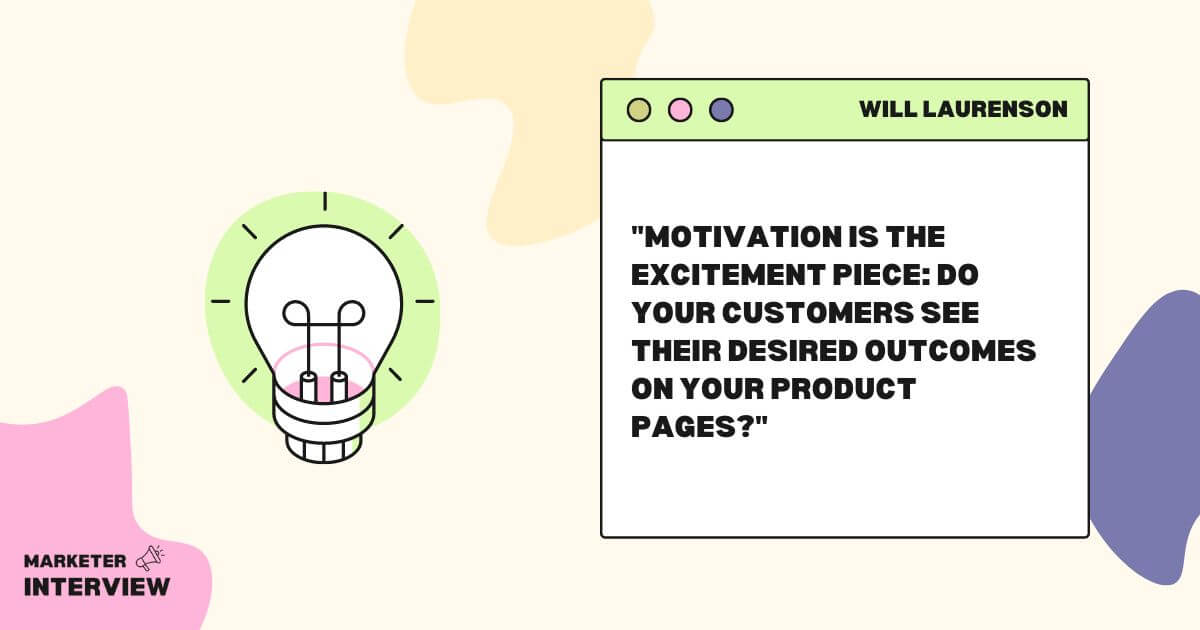
Our website has a great case study about a client that saw an additional $3.3 million in annual revenue by increasing their conversion rate by 11% and AOV by 9%.
Two of my favorite tests for them were:
On the Product Detail Pages (PDP), we saw evidence that visitors found the page overwhelming. Even a standard light for them had about 15 options, all displayed as separate swatch buttons.
This meant the page was cluttered, the CTA and bulleted reassurances were pushed below the fold, and that was just on the desktop. On mobile, they were much further down.
So, we switched these to dropdowns instead and saw a massive uplift in the conversion rate for visitors who interacted with the pages.
This was for 2 reasons:
Firstly, the space-saving. We could pull important elements above the fold, and the page felt less cluttered.
Secondly, the page had a clear flow. Step 1 was to pick the color. Step 2 was to pick the size. Step 3 was quantity, then add to the cart. The page had a more natural flow, and customers found it easier and quicker.
The 2nd test involved removing something:
Many things have become “best practices” for no reason whatsoever over the years.
In this case, the client introduced a basket hold timer during checkout. We’ll hold your basket for 15 minutes.
However, for this audience, it didn’t make sense. Customers were spending 6 months choosing their lighting, making sure they were happy with their decisions, so a 15-minute timer seemed to add fake urgency to the process, which put customers off.
Removing this improved conversion rate by 13.8%
What are some common challenges you face while implementing Conversion Rate Optimization for eCommerce brands, and how do you overcome them?
A big challenge is the brand’s expectation that we will take their conversion rate from 2% to 3%.
It doesn’t work like that. Conversion rate is a volatile metric. It’s constantly fluxing up and down.
With CRO, we can make sure the highs are higher, and the lows aren’t as low, but focusing on the overall site conversion rate as a metric is flawed thinking.
If a brand opens up Tiktok as a channel, CNV will fall.
If they drive huge traffic to their blog or some other non-sales-orientated area of the site, CNV will fall.
As the brand goes into Black Friday and Cyber Monday, CNV will normally skyrocket.
Guess what? It’s going to plummet straight after!
What we’re doing with CRO is making small incremental wins on the site with A/B testing while also providing the insight needed to improve on the traffic side (ads, emails, etc.) and validate any new business ideas the brand has.
Unfortunately, everyone wants an immediate ROI these days, and sometimes that takes time with CRO. But the ROI on CRO will be massive once it hits its flow.
In your experience, what key tools and software are essential for a CRO specialist’s arsenal?
This isn’t an exclusive list:
- Analytical research tools: Google Analytics
- Behavioral research tools (heatmaps, session recordings, etc.): Lucky Orange, Hotjar, Clarity
- Customer research tools: Typeform, Userbrain
- Testing platform: Figpii, Convert.com, Webtrends Optimize, VWO
Find the tools that suit your business needs, and ensure you cover at least these 4 areas.
A lot of other research you can do can be done manually or using AI tools to analyze and pull research – things like Review Mining, Customer Service audits, and even social media sentiment.
How do you stay updated with the latest trends and advancements in Conversion Rate Optimization? Any favorite resources or communities you rely on?
I have a strong network on LinkedIn for CRO, so I normally pick up things there or read the newsletters and blogs of other creators there.
Convert.com also puts on some great roundups, which I often feature on.
Otherwise, some good communities like D2C Fam, & Experiment Nation exist.
